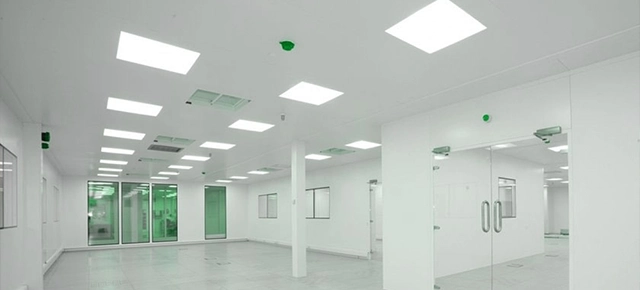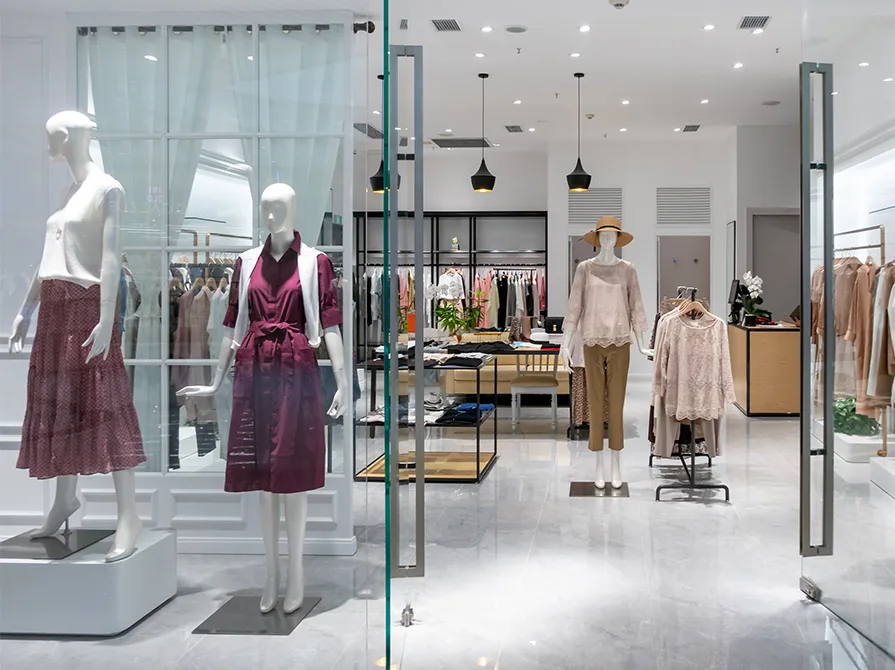Why Clean Room Lighting Matters in Industrial Manufacturing: A Deep Dive
Clean rooms are essential to various industries, including pharmaceuticals, biotechnology, semiconductors, and high-precision manufacturing. These controlled environments ensure minimal contamination, precise working conditions, and compliance with stringent regulatory standards. However, an often-overlooked factor in clean room efficiency is lighting.
Lighting in clean rooms plays a crucial role in ensuring operational accuracy, reducing contamination risks, and maintaining regulatory compliance. Without proper illumination, visibility issues, contamination risks, and even product defects can arise, leading to costly setbacks. This blog explores why clean room lighting is critical in industrial manufacturing, the challenges associated with it, and the smart solutions that can enhance efficiency, safety, and compliance.
The Critical Role of Clean Room Lighting in Industrial Manufacturing
1. Ensuring Precision and High-Quality Manufacturing
Clean rooms are used in industries where even the slightest impurity or error can result in defective products. Proper lighting ensures:
- Enhanced visibility for workers to handle sensitive materials like pharmaceuticals, microchips, and aerospace components.
- Accurate color perception in manufacturing environments where even slight variations in shade can affect product quality.
- Reduced eye strain and fatigue, allowing technicians to work with high levels of precision over extended periods.
2. Preventing Contamination Risks
- In pharmaceutical and semiconductor manufacturing, contamination can occur due to airborne particles, biological contaminants, or improper handling.
- Lighting fixtures must be designed to prevent dust accumulation and be easy to clean, ensuring compliance with essential standards.
- Traditional lighting can generate heat and attract airborne particles, whereas specialized LED lighting minimizes temperature fluctuations and contamination risks.
3. Meeting Regulatory Compliance & Industry Standards
- Clean room lighting must adhere to ISO, GMP (Good Manufacturing Practices), and FDA guidelines for optimal hygiene and efficiency.
- Monochromatic lighting solutions (such as yellow lighting for semiconductor manufacturing) prevent unwanted chemical reactions caused by certain light wavelengths.
- Proper lighting design helps maintain uniformity, glare control, and appropriate lux levels required by regulatory bodies.
Challenges of Clean Room Lighting in Industrial Settings
1. Harsh Environmental Conditions
- Clean rooms require dust-free, sterile, and sealed lighting that can withstand chemical cleaning agents.
- Traditional lighting fixtures may degrade under frequent sanitization and exposure to volatile organic compounds (VOCs).
2. Glare and Reflection Issues
- Excessive glare can cause worker fatigue and errors, reducing efficiency in industries where precision is paramount.
- Anti-glare coatings and diffused lighting solutions can mitigate these risks.
3. Energy Consumption & Heat Emission
- Clean rooms require controlled temperatures, but high-energy lighting sources can generate excess heat, affecting air filtration and cooling systems.
- Energy-efficient LED lighting reduces heat emission, ensuring lower energy costs and improved environmental stability.
4. Non-Uniform Illumination
- Inconsistent lighting across workspaces leads to shadowing and visibility problems.
- Using uniformly distributed luminaires with appropriate lux levels ensures even lighting throughout the clean room.
Smart Solutions for Clean Room Lighting
1. Monochromatic & Specialized Lighting
Certain industrial processes, such as semiconductor fabrication and pharmaceutical production, require specialized monochromatic lighting to prevent unwanted chemical reactions.
- Semiconductor industry: Yellow and blue monochromatic lighting is essential to eliminate photochemical reactions that can disrupt the fabrication of microchips and circuits. Without proper lighting, manufacturers risk contamination, reduced yields, and defective products.
- Pharmaceutical industry: In drug manufacturing, particularly for photosensitive drugs, exposure to full-spectrum lighting can alter chemical compositions. Controlled lighting environments with the right wavelengths help maintain drug potency, stability, and compliance with Good Manufacturing Practices (GMP).
- Laboratory & research applications: Precision-focused industries require tightly controlled wavelengths to ensure that experiments and production processes maintain integrity, preventing false test results and unstable compounds.
2. Sealed and Contamination-Resistant Fixtures
Maintaining the sterility and integrity of a clean room environment depends on lighting fixtures that are resistant to dust, contaminants, and bacteria.
- IP-rated (Ingress Protection) lighting: Designed with fully enclosed casings to prevent the accumulation of dust and airborne microbes that could compromise sensitive environments.
- Seamless and enclosed lighting fixtures: Clean rooms must adhere to stringent hygiene standards. Enclosed lighting systems prevent cracks and crevices where bacteria, mold, and dust could accumulate, ensuring long-term sterility.
- Chemical-resistant materials: Some clean rooms undergo frequent sterilization with harsh disinfectants. Fixtures made of non-corrosive, chemical-resistant materials withstand repeated cleanings without degrading.
3. Smart LED Solutions with IoT Integration
Modern clean rooms benefit significantly from the integration of smart LED lighting with IoT-based controls, improving efficiency and minimizing human intervention.
- Motion sensors & adaptive dimming: Smart LEDs detect movement and adjust brightness automatically, reducing unnecessary energy use and prolonging the lifespan of fixtures.
- Real-time monitoring & predictive maintenance: IoT-enabled lighting solutions allow facility managers to track energy consumption, detect faults early, and schedule maintenance proactively, preventing costly downtime.
- Integration with automation systems: Smart lighting can be connected to centralized building management systems (BMS), enabling seamless coordination with ventilation, air filtration, and temperature control for maximum efficiency.
4. Anti-Glare & Shadow-Free Illumination
Clean rooms require even, glare-free illumination to minimize eye strain, improve worker efficiency, and ensure precise manufacturing.
- Diffuse panel lighting & indirect lighting solutions: Eliminates harsh reflections and provides soft, uniform lighting that reduces visual fatigue.
- Shadow-free illumination: Clean rooms rely on precise hand movements for assembly, testing, and quality checks. Properly designed lighting prevents shadows that could interfere with precision work.
- Anti-glare coatings: Reduce the intensity of reflections on clean room surfaces, improving visual comfort for workers who spend long hours in sterile, high-focus environments.
Final Thoughts
Lighting in clean rooms is far more than just illumination—it is a critical component of ensuring product quality, worker safety, and compliance with stringent industry regulations. From monochromatic lighting for specialized manufacturing to sealed, contamination-resistant fixtures, the right clean room lighting solutions make a significant impact on efficiency, cost savings, and sustainability.
For industries looking to enhance their clean room operations, investing in smart, energy-efficient, and compliant lighting solutions is indispensable. Get in touch with us to know more about the latest clean room lighting technologies and illuminate the future of industrial manufacturing!










